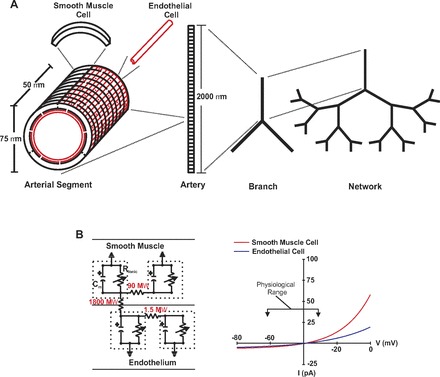Fig. 1.

Physical and electrical representation of a virtual artery. A: virtual artery was comprised 1 endothelial and 1 smooth muscle layer. The standard arterial segment consisted of 48 endothelial cells and 30 smooth muscle cells. Cells were treated as discrete elements with defined dimension, coupling, and ionic conductance. Neighboring smooth muscle cells were connected to one another as well as neighboring endothelial cells. Every smooth muscle cell was randomly connected to 2 endothelial cells. Arterial segments were assembled to build an isolated vessel and these in turn were assembled to form a branch structure or network. B: in the equivalent circuit diagram (left), each cell was modeled as a capacitator coupled in parallel with a nonlinear resistor representing ionic conductance; gap junctions were represented by linear resistors. I-V properties of nonlinear resistor are displayed on the right panel and are referenced to resting Vm of −40 mV.
